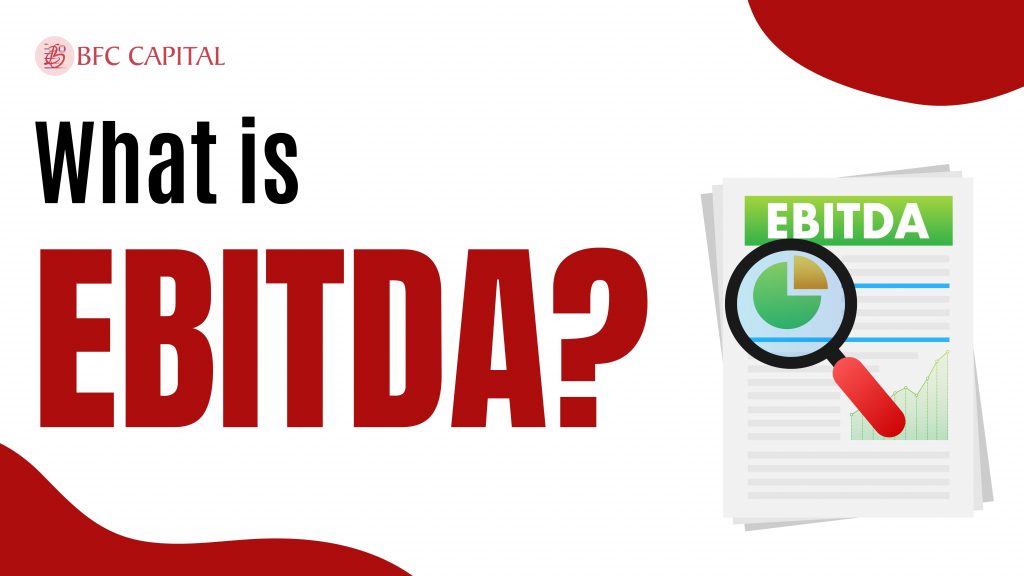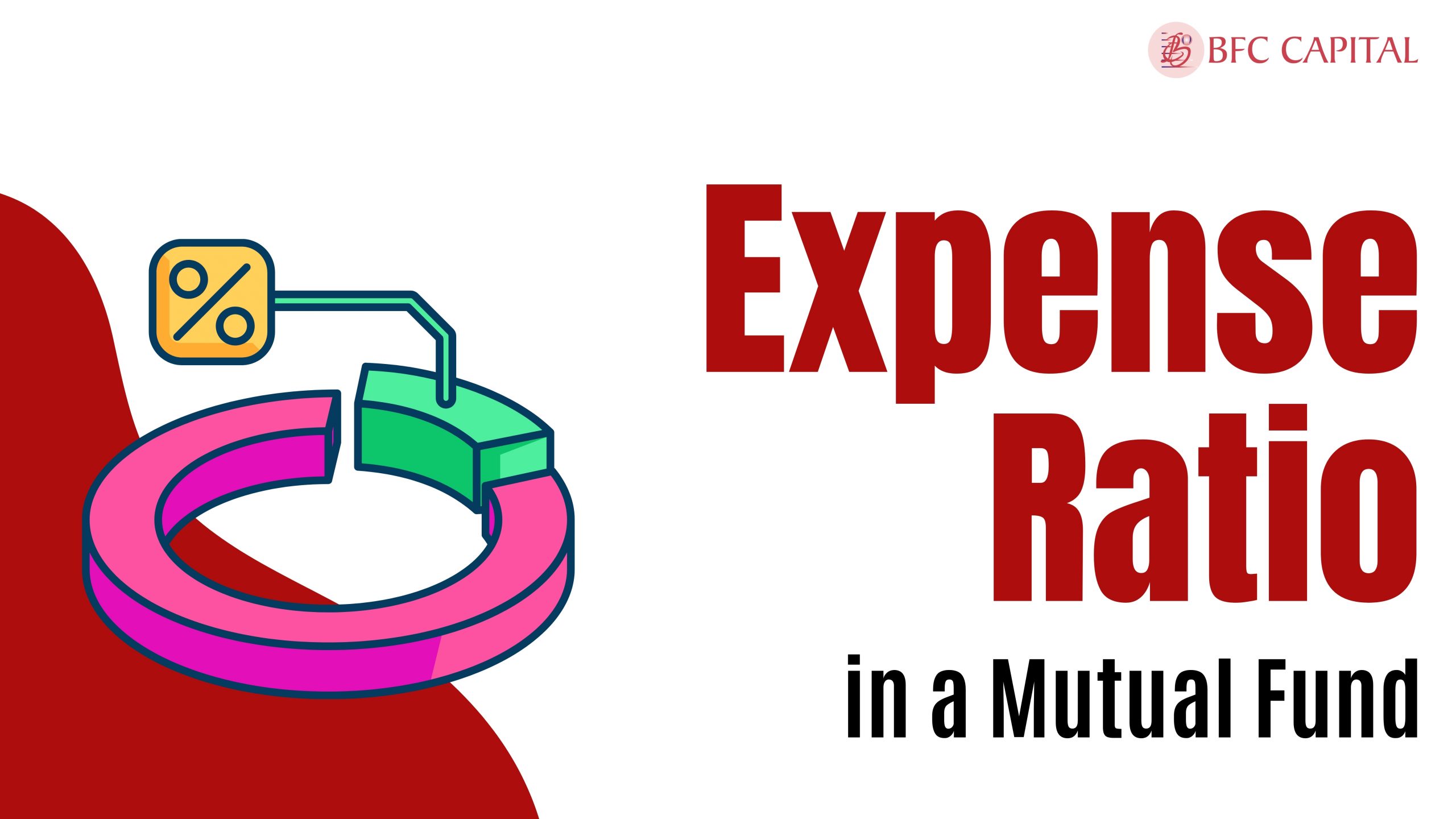
Imagine that you invest in a business or are evaluating your business performance. How does it generate cash from its core operations? This is where EBITDA comes into play. EBITDA strips away the lingering curtains of financial complexities and allows you to focus on what really matters: your business’s ability to generate earnings!
You need not worry if you are new to this concept. This blog will help break it down step by step. We will dive into EBITDA – Earnings Before Interest, Taxes, Depreciation, and Amortization. You’ll be introduced to examples and practical applications to help you understand EBITDA and how to calculate it.
Grab your calculator and explore the meaning, formula, and calculating method of EBITDA with BFC Capital!
What is EBITDA: Definition and the Components It Measures
EBITDA is Earnings Before Interest, Taxes, Depreciation, and Amortization. It is an important metric used across the financial landscape to help study your company’s profitability as well as operating efficiency. The focus is on its financial performance independent of the capital structure.
EBITDA is an alternative measure that focuses on earnings generated from core business operations irrespective of financial and accounting decisions. This metric negates non-cash expenses to give you a clear understanding of your company’s cash-generating capabilities. The deductions remove the factors that are discrete such as capital structure, taxes, interest, debt financing, and methods of depreciation.
Imagine this scenario: you own a manufacturing company and calculate its EBITDA. Now, you can assess how much cash is generated by your operations. This is irrespective of your equipment costs or the taxes your company pays. EBITDA efficiently compares your company to similar ones and removes variables that might tamper with the comparison.
You study how your company is performing with respect to its daily operations using these metrics. Use EBITDA to measure relative performance and finalize investment plans. It simplifies and quickens financial evaluations to highlight your company’s earning potential. It is also used for business evaluations to estimate your company’s real value. This is quite useful for mergers and acquisitions and for debt assessments to outline “creditworthiness.”
Significant Factors That Impact the Overall EBITDA Numbers
Now, let’s explore the components of EBITDA in detail:
- Company’s net income: The total revenue or net income of a company comprises every operating and non-operating cost, such as SG&A, COGS, and R&D.
Note: EBITDA and net income measure a company’s financial performance, but they are significantly different. EBITDA focuses on operational profitability and includes taxes, interest, depreciation, and amortization. It provides a clear understanding of the company’s core performance.
Meanwhile, net income is the total earnings of a company after deducting the above-mentioned expenses. It focuses on the non-operational performance of the company.
- Company’s operating income: Amount calculated by subtracting your company’s operational costs from the total revenue in a specific period.
- Interest: This expense is borrowed to fund your company’s activities. Different companies with different capital structures have different interests. When you add back interest to calculate the EDITBA, it becomes easier to compare the performance of the companies.
- Taxes: These are the same for public and private companies. Taxes are impacted by company-specific factors such as net operating losses, tax credits, and deferred taxes. They are not significant to assess your management team’s performance but they make it easier to compare companies.
- Amortization: This expense is incurred for intangible assets, such as patents or e-books, which are used for income generation across their useful economic life.
- Depreciation: This specific expense depends on fixed tangible assets, such as vehicles or physical books, that deteriorate over time. It is the gradual reduction in intangible assets’ value due to wear and tear.
Explaining Amortization and Depreciation
Amortization and depreciation are non-cash expenses located on the cash flow statements under the “cash from operating activities” section. They are based on the useful economic life, depreciation used, and the salvage value. Due to this, the operating income may vary, and it is backed out of EBITDA calculations.
Imagine that you buy a new car for Rs. 5,00,000. The car serves you for over 10 years and eventually loses its value.
Let’s say, in the first case, you take out a loan to buy the car. You pay back the loan over a certain period. Amortization is the process of paying back the loan in equal installments that comprise a portion of principal and interest. As you keep on making payments, the amount you owe decreases.
The second case considers the car’s loan. The car is prone to wear and tear. Hence, as many times you use the car, its value decreases with its condition. Your car might cost Rs. 3,00,000 after a year which means Rs. 2,00,000 has been depreciated or “used up”. Depreciation is consuming the car’s “useful life” until the car is depreciated i.e., loses its value due to age, wear, and tear.
Hence, in simpler terms, depreciation is the gradual loss of an asset’s value, whereas amortization is the process of paying the loan in equal installments.
How Is EBITDA Calculated? : Factors Affecting Your Company’s Financial Performance
EBITDA is overall calculated by adjusting the operating income, i.e., EBIT, for non-cash expenses – add-back depreciation and amortization. Let’s assume that your company generates a net income of Rs. 500,000 in a year with an operating income of 650,000. The other financials are as follows:
- Interest = Rs. 50,000
- Taxes = Rs. 100,000
- Amortization = Rs. 20,000
- Depreciation = Rs. 30,000
It is quite straightforward to calculate EBITDA. Access your company’s financial statement of a specific year, say 2022, to churn out significant details such as net income, operating income, interest, taxes, depreciation, and amortization. You can calculate the EDITBA using two significant formulas.
- The first method is calculating using the net income.
=> EBITDA = Interest + Taxes + Net Income + Depreciation + Amortization
= 500,000 + 50,000 + 100,000 + 20,000 + 30,000 = Rs. 700,000
Given the above calculation, the EBITDA using the net income is Rs. 700,000.
- The second method uses the operating income.
=> EBITDA = Operating income + Depreciation + Amortization
= 650,000 + 20,000 + 30,000 = Rs. 700,000
EBITDA Margin
From this calculation, you analyze whether your company has a strong EBITDA. A strong or good EBITDA is at least twice your company’s interest. When the EBITDA margin is higher, it is favorable, i.e., a percentage of revenue above 15% is considered strong across several sectors.
Note: The EBITDA margin showcases your company’s annually generated cash profit. It offers an insight into the company’s average earnings in comparison to the total revenue generated.
Suppose you have a lemonade stand. You sell lemonade to earn money. But before that, you spend some money to purchase lemons and sugar to make the lemonade. EBITDA margin helps you calculate the money you make from selling lemonade after paying for the ingredients. However, this doesn’t factor in the future costs of buying new clothes with the money you have made.
=> EBITDA margin = (EBITDA/Total Revenue) * 100
As decipherable from the formulae, the EBITDA margin is higher, better the company’s growth potential.
Imagine this scenario: The EBITDA of your company is Rs. 700,000, as taken from the above example, The aggregate revenue is Rs. 70,00,000. While, your rival company’s EBITDA is Rs. 850,000, while the revenue is Rs. 10,000,000.
The EBITDA margin in the first scenario is 10%, whereas in the second case, it is 8.5%. As you compare, we conclude that even if the revenue in the first case is low, the EBITDA margin is relatively higher. On the other hand, even when the revenue of your rival company is higher their EBITDA is comparatively lower. This illustrates a stronger operational efficiency of your company.
An EBITDA margin of 10% is considered good but an even higher EBITDA margin is better. However, this also depends on the context such as the industry size and changes per your company’s current life cycle.
Main Shortcomings of Using EBITDA
EBITDA is widely used across the landscape of corporate finance for finance modeling, mergers and acquisitions (M&A), or corporate valuations. However, EBITDA is often used to portray inaccurate or misleading cash flow profile or profit of a company.
What are the primary sources of concerns that base EBITDA as a flawed metric system?
- Neglecting Capex: Capex, or Capital Expenditure, is an important recurring cash outflow. But, the entire income is not represented on the financial statement. Rather, it is allocated across the tangible assets’ useful life assumption via add-back depreciation.
- Increase/Decrease in Net Working Capital: A change in NWC showcases a company’s current operational liabilities and assets. It significantly impacts the free cash flow, However, EBITDA ignores the funds required for working capital needs.
- EBITDA is a non-GAAP or IFRS metric: This means that EBITDA lacks standardization. Hence, it offers the management team more wiggle room to manipulate their earnings by including or excluding specific items.
Do you judge a car’s performance only by its top speed? No. It paints an incomplete picture that might lead you to purchase a car that doesn’t align with your overall wants. When you use EBITDA to judge your company’s performance, you do the same. To evaluate the suitability of the new car, you should also consider maintenance cost, fuel efficiency, and safety features. This is the same for your company’s overall performance and operational efficiency.
Concluding Points!
Assess your company’s operational profitability with EBITDA. Remember that different industrial domains have diverse capital depreciation and appreciation. As an investor, be aware of the adjustments made while calculating EBITDA. It is easier for companies to manipulate specific expenses to offer you a desirable EBITDA margin to showcase favorable financial performance.
EBITDA is an important metric but not the only factor used to make investment decisions. India has dynamic market conditions. Consider other financial metrics, qualitative factors, and benchmarks to evaluate your company’s growth potential.
Please share your thoughts on this post by leaving a reply in the comments section.
Also, check out our recent post on: “What is Compound Interest—Meaning, Formula, and How to Calculate?“
To learn more about mutual funds, contact us via Phone, WhatsApp, Email, or visit our Website. Additionally, you can download the Prodigy Pro app to start investing today!
Disclaimer – This article is for educational purposes only and by no means intends to substitute expert guidance. Mutual fund investments are subject to market risks. Please read the scheme-related document carefully before investing.






